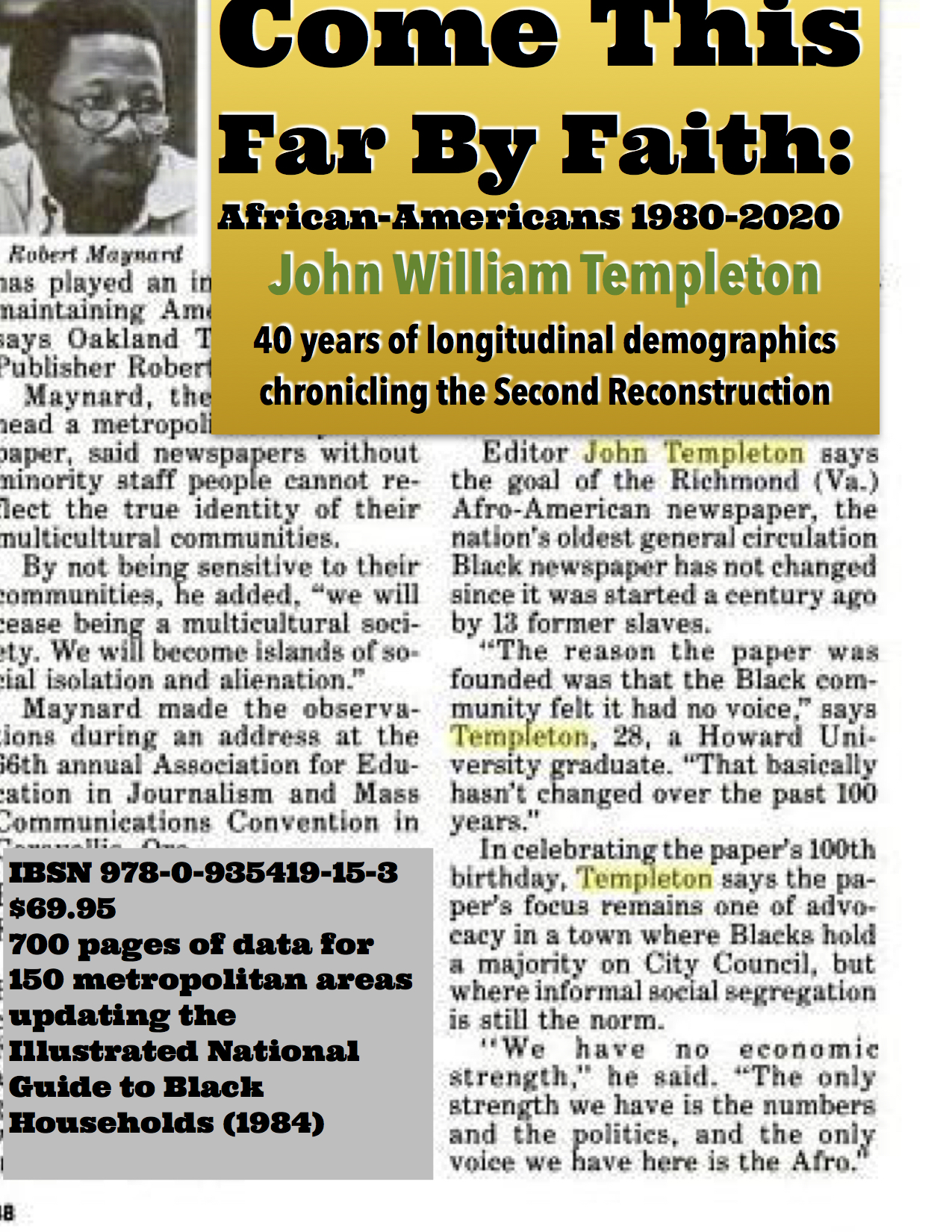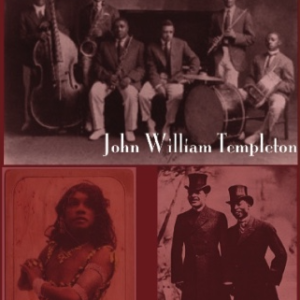Description
What happened?
In 1980, 90 percent of African-Americans lived on a block that was 100 percent Black, according to the 1980 U.S. Census, which John William Templeton analyzed in his 1984 book, Illustrated National Guide to Black Households.
In 2020, many of those blocks have no African-Americans at all
African-American aggregate income rose from $30 billion in 1968 to $1.1 billion in 2022. African-American self-employment exceeds three million.
However, the number of Black corporate CEOs is fewer in 2022 than 1990.
From spacious homes in suburbs, well-paid African-Americans and families living in public housing share an uneasy feeling that, in the words of N.J. African-American Chamber President John Harmon, “we’re running hard and going backward.
Not completely on purpose, John William Templeton was watching the process the entire time as editor of the Richmond AFRO-AMERICAN, San Jose Business Journal and Blackmoney.com. However, he had a starting point from Illustrated National Guide to Black Households, which analyzed 175 variables across 115 markets. Since 2004, he has chronicled Black business as the co-founder of National Black Business Month and author of the annual State of Black Business report. So, when it occurred that he had to recreate his 1984 book as a digital file, he wondered,”what’s happened since then?”
In 1980, Templeton was editor of the Richmond AFRO and project area chair of the Jackson Ward National Historic District. Now, Jackson Ward is still a thriving Black community with a new Virginia Black History Museum. It is an example of the 40-year perspective on policy needed to understand the diversions from the 13th, 14th and 15th Amendments which have states passing laws that would have banned Alex Haley’s Roots in 2022.
As creator of Our10Plan: the African-American economic strategy in 2015, Templeton has worked with national Black organizations to develop BlackWealth2020, the kind of coordinated strategy lacking since the 1960s. However, the biggest need he has discerned is a reliable reference source for African-Americans to answer Marvin Gaye’s question, “What’s goin’ on?”
The numbers tell how bad implementation and misinformation has turned many victories into disillusionment–moving from 200,000 African-Americans incarcerated to more than 2 million.
Yet, in Come This Far By Faith, Templeton wades through the despair to show the steady forward march of 47 million African-Americans surpassing the wildest dreams of their forebears and gives very simple strategies to spread the success of Oprah, Tyler Perry and LeBron James more widely with an industrial policy zeroing in on life science and cybersecurity and Pan African focus on the development of the Diaspora.
Book purchasers also get a subscription to the monthly Journal of Black Innovation




